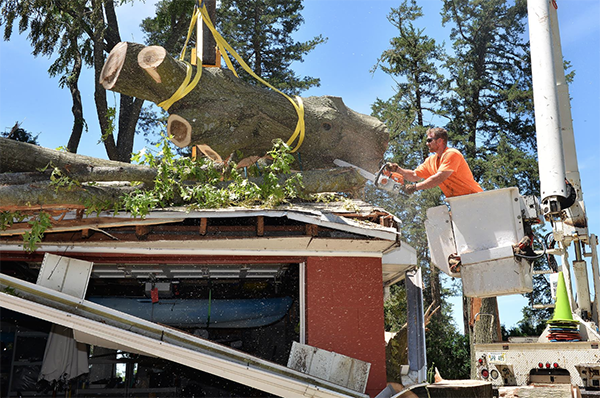Winter is coming up on us here in the Conejo Valley, and we can expect some high winds along with rain sometime over the next few months. Rain and wind work together to do some mischief, softening the soil to make it more likely wind will knock down a tree. All that means it’s time to think about what you should do if your trees are damaged in a storm.

First – Think Prevention
It’s not realistic to think we can prevent all storm damage to your beautiful trees, but with advance planning we can identify some conditions that might be trouble, and help you prepare for inclement weather. Some preventive measures can include:
- Removing dead or rotting branches
- Correcting problems caused by improper maintenance practices, such as topping
- Identifying defective branches, roots or even portions of the trunk and taking steps to manage problem areas
- Guiding young trees to grow properly
After The Storm
The first thing to do after a storm is assess any damage in your yard. Take a look at the major limbs in all your trees — are they remaining and is the trunk unbroken? If there’s been damage, are at least 50 percent of the branches still intact? If it’s “yes” to both these questions, there’s a good chance your tree will recover, although some cleanup work will be required.
Before you get to work cleaning up, keep one thing top of mind: Safety!
A storm-damaged tree limb that’s in contact with an electrical wire is no joke. Both direct and indirect contact of a limb with electrical wires could result in property damage, serious injury or even death. Broken or dangling limbs are also prone to breaking completely off. If they do, watch out! They can land on you, your car, your kids — another one to take seriously. Finally, if limbs are under tension after a storm — perhaps something is leaning against them, such as another broken branch — they can react is unexpected ways when they’re cut.
Bottom line is that you should probably resist the urge to simply start cutting broken limbs yourself. Give us a call. We’ll give you an objective evaluation of how extensive the damage is and what your best options are for cleaning up.

